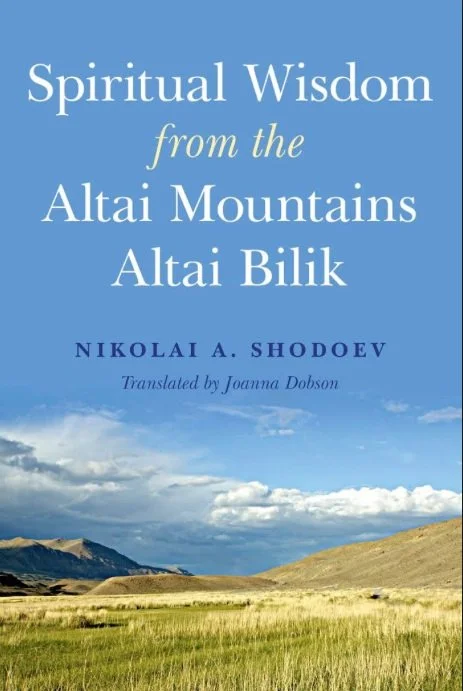Spiritual Wisdom from the Altai Mountains
Click book cover image to read Introduction
Of all of my travels on this planet, I do not think any have moved me so deeply as my journey through Altai. I could not recommend this book highly enough. Altai Bilik is knowledge of the human soul and the harmonious interweaving of human existence with greater cosmic reality. This book of timeless and universal wisdom is a necessary reminder to humanity as we prepare to enter the noosphere, the next stage of our conscious evolution on Earth. — Jose Arguelles
Spiritual Wisdom from the Altai Mountains by indigenous elder Nikolai Shodoev describes ‘Bilik’ - the way of knowing, the traditional worldview of the Turkic peoples of the Altai Republic, Siberia. Shodoev touches on the twentieth century development from shamanism to the White Faith.
Bilik can be described as a contemporary myth that abides in the soul of the Altai people, endowing them with a wholistic worldview. It is a myth that is constantly evolving. It simultaneously incorporates ancient wisdom while embracing contemporary science.
It is an ancient, sacred treasure that has been passed from one generation to another in the form of history, oral culture and behavioural codes. It has existed in the memory of the Altai people, their traditions, customs and views, but not in written form until now.
“Nikolai Shodoev is a well known figure both throughout Altai and beyond. He was born in 1934 in the village of Ust’ Kan, Altai Republic. Like most children of the war years he learned the responsibility of hard work early, and from the age of twelve began replacing kolkhoz workers who had left for the front, helping out with herds of sheep and calves.”
“To develop good instruction in one’s daily life it is essential that one develop ‘long will’ (chydyun) and enlighten the mind with wisdom (oi). It is important to develop an understanding of how to act with fairness, how to overcome discord among others.”
Aspects of bilik are preserved in cultural monuments, museum artefacts, religious symbols and rock carvings.



